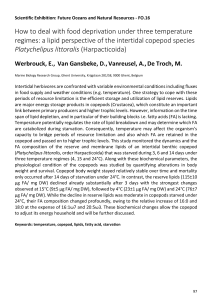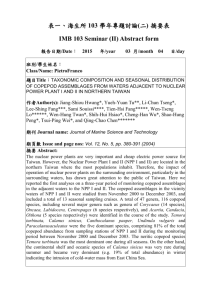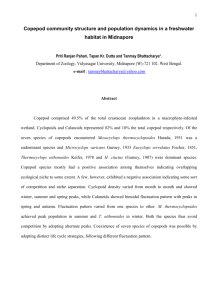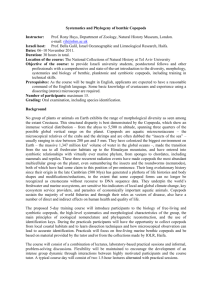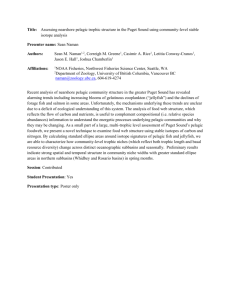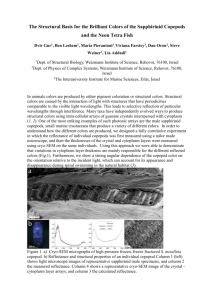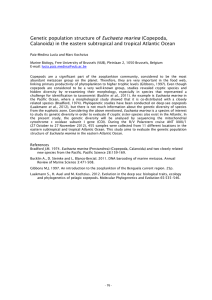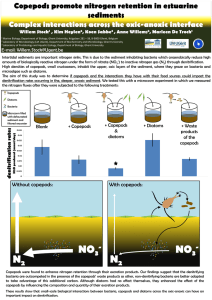Biodiversity of the Copepoda
advertisement
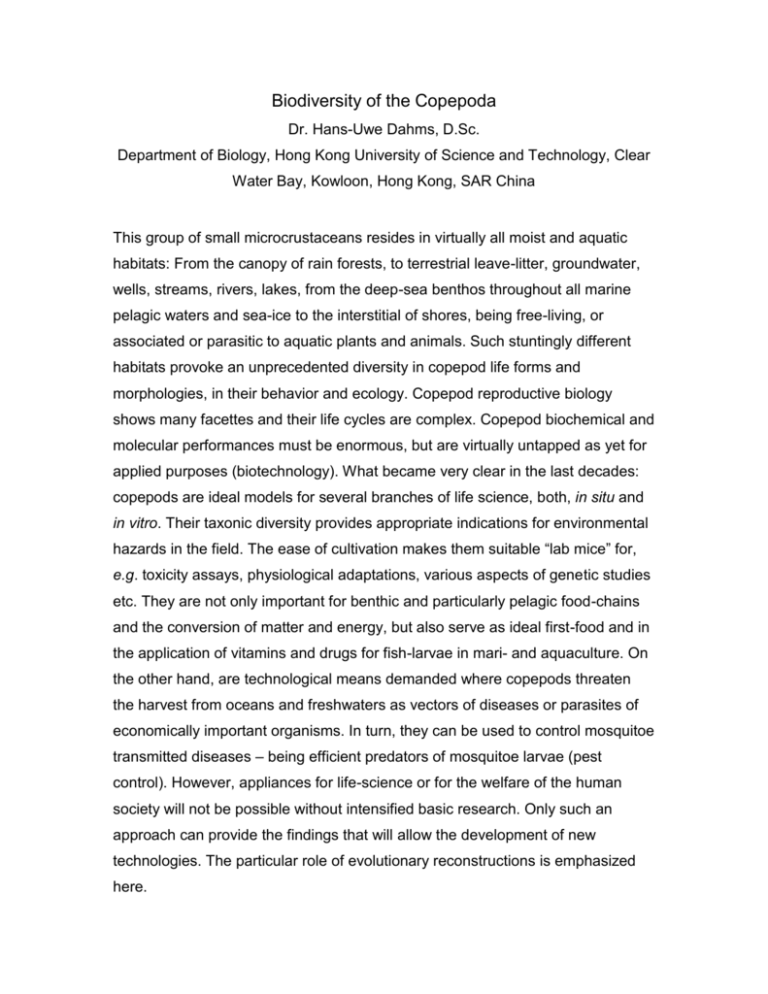
Biodiversity of the Copepoda Dr. Hans-Uwe Dahms, D.Sc. Department of Biology, Hong Kong University of Science and Technology, Clear Water Bay, Kowloon, Hong Kong, SAR China This group of small microcrustaceans resides in virtually all moist and aquatic habitats: From the canopy of rain forests, to terrestrial leave-litter, groundwater, wells, streams, rivers, lakes, from the deep-sea benthos throughout all marine pelagic waters and sea-ice to the interstitial of shores, being free-living, or associated or parasitic to aquatic plants and animals. Such stuntingly different habitats provoke an unprecedented diversity in copepod life forms and morphologies, in their behavior and ecology. Copepod reproductive biology shows many facettes and their life cycles are complex. Copepod biochemical and molecular performances must be enormous, but are virtually untapped as yet for applied purposes (biotechnology). What became very clear in the last decades: copepods are ideal models for several branches of life science, both, in situ and in vitro. Their taxonic diversity provides appropriate indications for environmental hazards in the field. The ease of cultivation makes them suitable “lab mice” for, e.g. toxicity assays, physiological adaptations, various aspects of genetic studies etc. They are not only important for benthic and particularly pelagic food-chains and the conversion of matter and energy, but also serve as ideal first-food and in the application of vitamins and drugs for fish-larvae in mari- and aquaculture. On the other hand, are technological means demanded where copepods threaten the harvest from oceans and freshwaters as vectors of diseases or parasites of economically important organisms. In turn, they can be used to control mosquitoe transmitted diseases – being efficient predators of mosquitoe larvae (pest control). However, appliances for life-science or for the welfare of the human society will not be possible without intensified basic research. Only such an approach can provide the findings that will allow the development of new technologies. The particular role of evolutionary reconstructions is emphasized here.
